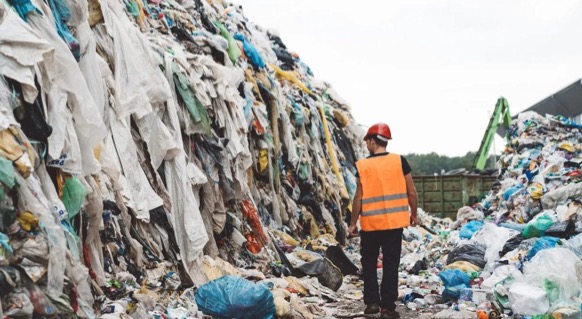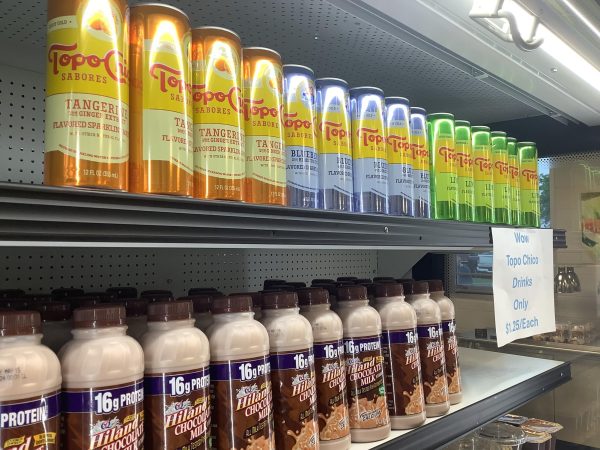Time to Slow Down Fast Fashion

A landfill overflowing with clothing due to fast fashion
Shopping for clothes used to be an occasion one would embark on a few times a year, usually coinciding with seasonal changes or a special event. But the surge in online ventures has made shopping more accessible, and therefore a more frequent pastime. This exponential growth in clothing sales has publicized the term “fast fashion,” making it a highly debated topic as of late. So what exactly is fast fashion, and why is it such a bad thing?
Fast fashion is the practice of producing large quantities of clothing in a short period of time. It began in the 1990s when the clothing store Zara made its way to New York City and began its mission to bring clothes from the runway to their shelves in only two weeks. Instead of collections being released three or four times a year, they were now getting distributed nearly every other week. While this generation of new clothing may sound like an ideal situation, it is actually detrimental to almost every party involved.
The quick turnaround time between production and sales means products are cheaply made and often unethically sourced. Clothes used to be made to last several months if not years. Now, however, apparel is poor quality and intentionally designed to go out of style in just a few weeks.
The sooner clothes lose popularity, the sooner customers are likely to return to a store to purchase new items to fit new trends. Not only is this costing customers more money in the long run, but it also contributes to vast amounts of waste. According to Green America Magazine, the average American throws away around 70 pounds of clothing each year. That means about 16 million pounds of nearly brand new clothes are annually discarded into landfills.
Social media has been one of the main conductors of the fast fashion train. Celebrities or influencers with large followings are often sent clothes from brand deals. Followers are then instilled with the desire to buy these products for themselves. While this type of advertising is not inherently bad, many people do not realize the negative impacts that come with unconscientious shopping.
Consumers are not the only ones suffering from fast fashion. Many American companies manufacture their goods overseas before shipping them back to the States to be sold. Although this allows for cheaper production, it does so at the expense of many people. Between low wages and dangerous working conditions, factory workers and farmers are exploited on a daily basis.
Unfortunately, these unethical methods do not end there. Fast fashion is a leading contributor to pollution in water, land and air environments. Cheap dyes that are used to color clothings tend to be toxic and often make their way into water systems. This is not only damaging to humans who rely on the water but also to the fish and other wildlife that live there. Polyester is the most popular fabric choice among fast fashion companies due to its inexpensive nature. The drawback is that the material is derived from fossil fuels that pollute the air. Additionally, polyesters shed micro pieces that make their way to the ocean and contribute to the planet’s plastic accumulation.
Fast fashion has risen in popularity over the past few years, and while many are more than happy to buy into the consumer culture, others have taken efforts to reduce the industry’s negative impacts. Education is one of the most important ways to combat the repercussions of fast fashion. Knowing about the dangers of over consumption can ensure you make better decisions moving forward. Here are just a few ways you can help to slow down fast fashion.
One way to reduce waste is to wear what you have. This is the easiest way to limit refuse in the fashion industry. It also saves you money and forces you to take a closer look at the clothing items you already own.
Another trick to help limit unnecessary purchases is to come up with at least three different ways to style your new piece of clothing before you buy it. This will prevent you from buying an item you will tire of quickly. It is also important to remember that buying “basics” such as a pair of jeans or a plain colored shirt will be better in the long run because they make it easier to put together multiple, unique outfits.
Being a conscientious shopper is necessary in limiting textile waste. Slowing down fast fashion does not mean you have to give up shopping entirely. Rather, it is a way to make smarter decisions when purchasing clothes. One way to do this is to consider how many times you will actually wear the product you are buying. Buying a $30 top you will only wear twice is unreasonable, while spending $50 on a pair of shoes you will use everyday makes more sense.
It is also circular to be mindful of where you shop. Stores like Zara and H&M are huge proponents of fast fashion. Online stores such as Shein and Boohoo have also been exposed as companies that exploit their workers and produce cheap quality products. It is also important to be mindful of who you follow on social media. Rather than getting caught up under the influence of harmful trends, it is better to unfollow influential people who endorse fast fashion to avoid the temptation all together.
Thrifting is yet another solution and serves as a beneficial alternative to fast fashion because you can buy clothes at low prices without contributing to a product’s demand. There is also the added bonus of recycling clothes and preventing more items from ending up in a landfill.
As the negative effects of fast fashion are brought to light, more companies are seeking ways to decrease the detrimental impacts of the industry. Positive change is on the rise, but it is ultimately up to consumers to make conscious choices and push for ethical practices.

Paige Hunt is a senior here at St. Dominic. She is on the varsity swim team and is a member of NHS and Ambassadors Club. When she’s not at school, Paige...















